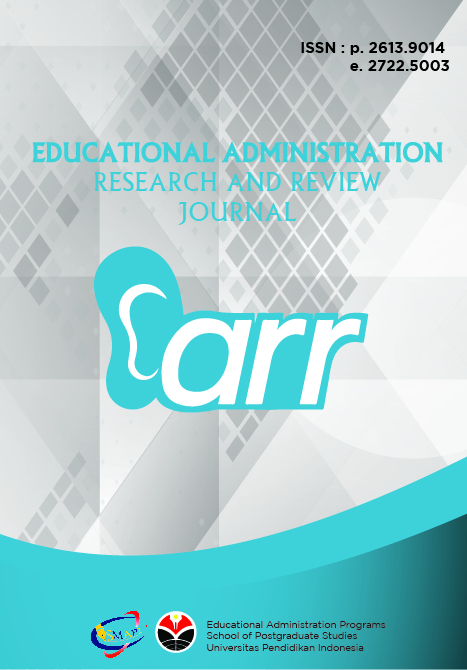The Educational Administration Research and Review (EARR) is the international refereed journal in the field of educational leadership and management founded first in 2017 initiated by the center of Study Educational Leadership and Planning of Educational Administration School of Post Graduate Universitas Pendidikan Indonesia.

Vol 7, No 1 (2023): JUNE 2023
Table of Contents
Articles
|
Liu Jin, Muhammad Faizal A. Ghani
|
|
|
Sutarman Sutarman, Parjiman Parjiman, Muhammad Chirzin
|
|
|
Mohammadd Wazir Shafie b. Hj. Aliasah, Zuraidah Abdullah, Salwati Shafee
|
|
|
Dian Hidayati, Karolina Sriwahyu Ningsi Masa
|
|
|
Saiful Adli Ab Rahim
|
|
|
Ihsana El Khuluqo, Ivan Zuadkia
|
|



